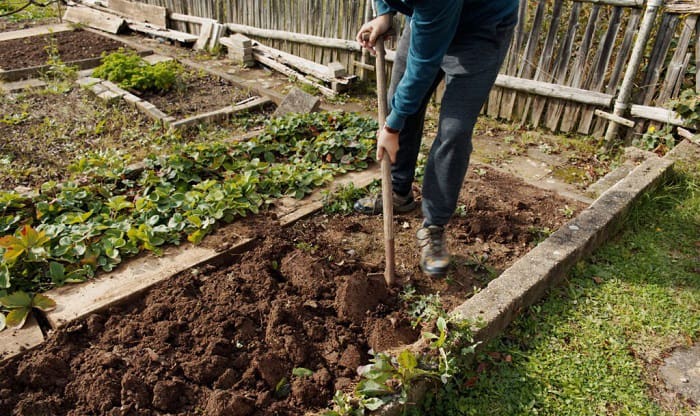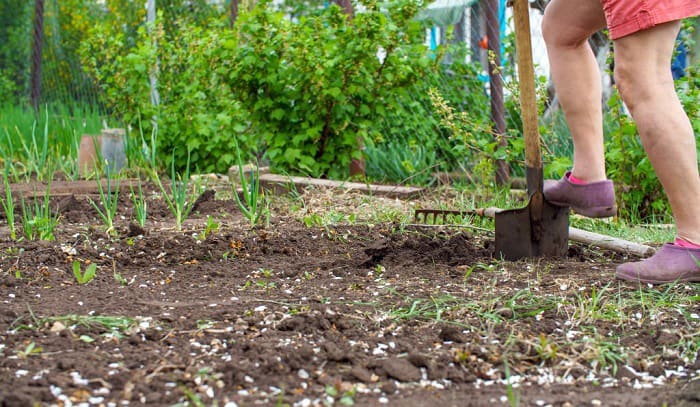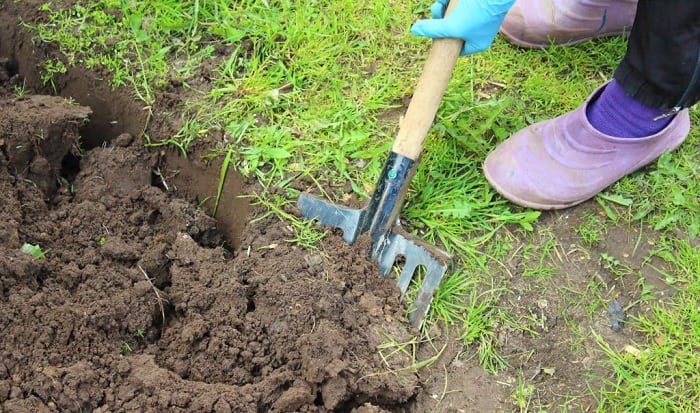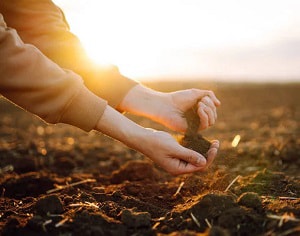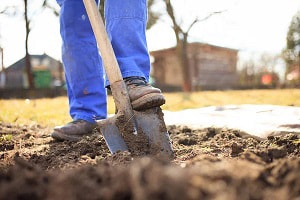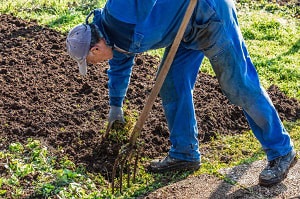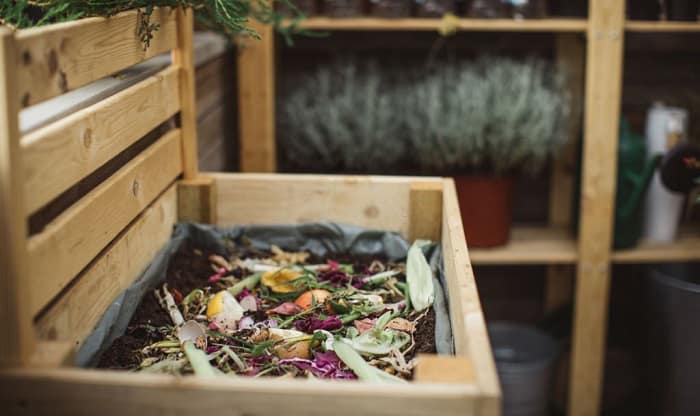Tilling a garden makes it easier for plant roots to dig into the soil. Plus, this process helps water soak into the ground better and ease the removal of weeds. Suffice to say, if you know how to break up soil, your vegetables and flowers will have higher chances of thriving.
But how to till a garden without a tiller? If you don’t have motorized equipment, you can try a method called double digging.
Table of Contents
What You Need to Till a Garden by Hand
1. Digging tool
In this tutorial, we’ll plow the soil with a shovel. It’s best to find one with a round point and a steel blade that can penetrate the ground without breaking, but if you don’t have this tool, you can use one of the following:
- Manual hoe – functions better when the ground is somewhat dry.
- Wheel hoe – best suited for soft soil, won’t work very well for compact soil.
- Garden Weasel’s cultivator – works better when the soil is slightly damp.
- Pickaxe/Mattock – recommended for clay and rocky soil but will require substantial effort to use (more than using a manual hoe).
- Rake – should not be used unless your soil is very soft. A rake will help organic matters like compost sink deeper into the garden bed.
- Handheld drill and auger drill bit – I don’t recommend this option because you’ll need two devices rather than one, and the drill has to be very strong to loosen soil. You’ll also need to worry about the power source of the drill, unlike with the above choices.
- Garden claw – similar to a rake.
- Pitchfork – easier to use than a manual hoe but is less effective than manual hoes on tough soil
2. Organic material (compost/peat moss)
3. Wheelbarrow
4. Gloves
Because you’ll exert a lot of force while digging the soil, it’s wise to use gloves to protect the hands against bruises.
5. Stakes (optional)
If you’re tilling your yard for the first time, it might be helpful to mark the outlines of your garden beds. This way, you won’t lose track of where to dig once the ground becomes messy.
Easiest Way to Till a Garden Without a Tiller
Step 1: Make sure it’s the right time for digging
The perfect time to till a lawn is spring when the ground is not too wet and not too dry. To determine whether you can start tilling, check the soil at a depth of 8 inches; it should crumble when squeezed and not feel clumpy.
Step 2: Improve the soil’s quality
To provide plants with the best environment for growth, you need to use soil amendments. Organic materials like compost and peat moss can improve moisture retention, drainage, and soil structure.
You can make your own compost using leaves and grass or buy commercial products. As for peat moss, it can help plants retain nutrients but is less sustainable than compost.
If you use manure, make sure to select a product of poultry, rabbit, or sheep origin, since these types offer the highest nutritional values.
Step 3: Dig your first row
- Mark the outlines of your garden beds. They should be up to 12 inches wide.
- In addition, make sure to leave sufficient space for walking between each row, as you’ll need room to move gardening tools, water plants, and remove insects, among other tasks.
- Then, dig a 12-inch deep hole and move the soil you dug up into a wheelbarrow. You’ll need this soil to fill the last garden bed.
Step 4: Dig your next rows
- Dig the second garden row according to the outline you made. Don’t discard the soil here. Instead, put it in your first row.
- Repeat the above step as many times as you want until you’ve created all your trenches. The soil from your third row will fill your second row, and so on.
- Check your work to make sure the ground surface is level. If not, smoothen it up by removing and adding soil to certain parts of the garden bed.
Tip: As you till a yard, you can remove weeds that pop up from under the soil.
Tips for Hand Tilling Garden Soil
- Although tilling can be beneficial, it also increases the risk of erosion. It also changes the structure of the garden bed (specifically, the distribution of nutrition). Hence, it’s best only to do this task when soil quality is poor.
- If the ground is too dry, you can water it and wait about two days for the moisture to soak in before tilling.
- Because tilling can disrupt the structure of the soil, it’s best to wait for 2 to 3 weeks after tilling to sow seeds. This practice will give enough time for the earth to readjust and for the compost to work its magic.
- When plowing a garden, don’t dig too close to mature plants, as you might damage their roots.
- It’s okay to till soil in the fall. You don’t have to wait until spring to do so. In fact, if your soil needs pH adjustment (for example, you’re increasing pH by adding lime), the more time the garden can sit before planting, the better.
- The amount of organic matter in the soil should be 2%, although it’s possible to go up to 10% for flowers and vegetables. Compost should be readded annually at a quantity of around 1 inch.
- Before you till soil without a tiller, make sure the ground has the right temperature (60 degrees Fahrenheit).
- The best way to treat clay soil before plowing it is to add sand or gypsum.
- As you push the shovel into the ground, remember to lower your knees and not over-exert yourself. Don’t try to finish tilling the garden in one go, especially if your land is big. Take breaks in between digging trenches and let your muscles relax.
- Avoid using parts of diseased plants as your compost. If you have no healthy old vegetation, use store-bought organic material.
Conclusion
Hopefully, you now know how to till a garden without a tiller. By following the steps above, you won’t have to spend money buying or renting any expensive machinery.
What’s more, manually digging your soil can be beneficial physical exercise, and you won’t have to hire professionals to rake your garden before planting.
If you enjoyed this article, please share it with other people. Thank you for reading!
There are some other gardening tips you can refer to:

Hi, I am William – Floridayards’ digital content creator. My job is to find answers to all your concerns with thorough research and our team’s expert advice. I will also bring you honest reviews on the best products and equipment for raising your beautiful garden. Please look forward to our work!


